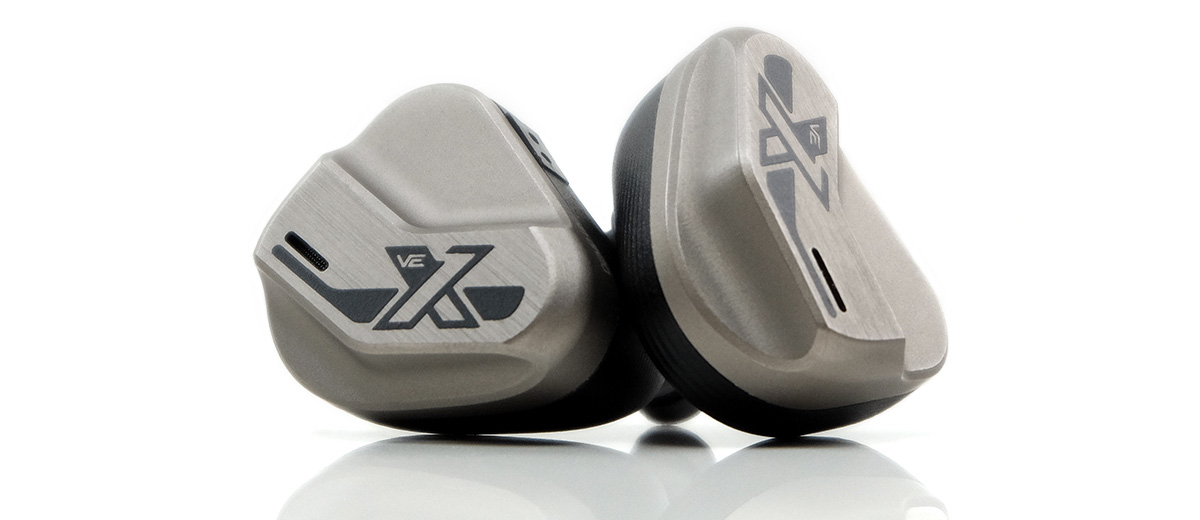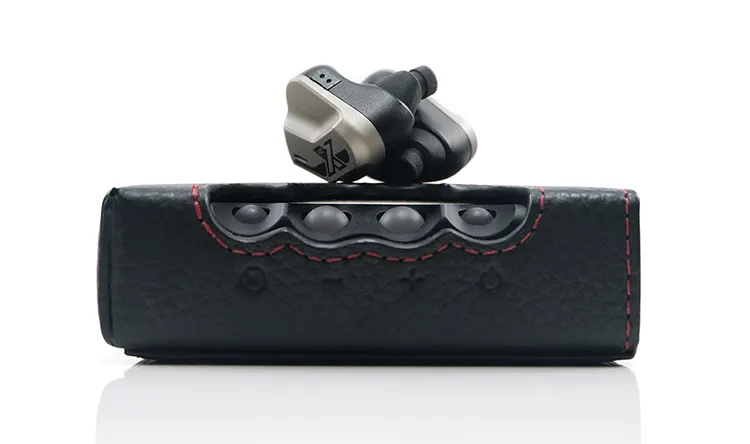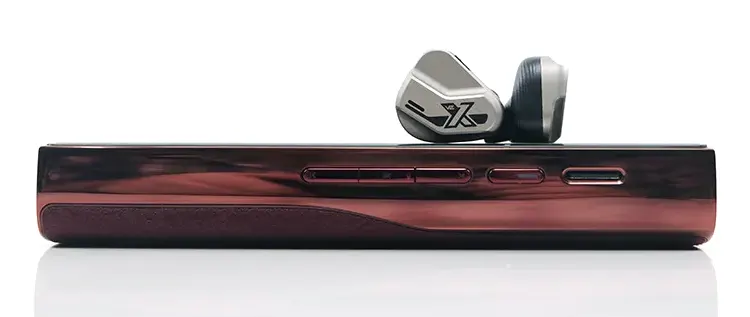Sound Impressions
The following VE10 sound impressions were created using a mixture of the HiBy R8 II and Cayin’s N8ii as both source and amplification with both set to Turbo and P+ modes using their respective 4.4mm balanced outputs.
Summary
At a high level, the VE10 is an exquisite yet exciting presentation, influenced by a mix of elements from two of Vision Ears’ current TOTL Premium Line monitors: the Phonix and the EXT.
It draws from the low-end weight and top-end extension of the EXT and combines it with the improved midrange presence and precision similar to the Phonix.
The resulting combination is a powerful, dynamic tuning with excellent headroom but also one that brings plenty of life and engagement to vocals and midrange instrumental impact.
I would go as far as to say this is the most confident and assertive midrange presentation from a VE Line monitor since the likes of the older VE5, only with much better spacing and resolution.
The tonal quality is natural sounding through the lows and mids and traversing more toward neutral in the highs. I could classify this as a very flexible coloration equally at home with rock, pop, or classics. Whatever genre you want to throw at the VE10 it seems to handle with ease.
That flexibility also extends to how well the easy-do-drive VE10 pairs with sources adding a welcome degree of transparency to whatever you match it with.
For example, the likes of the DX320 MAX Ti and HiBy’s R8 II deliver the goods on that VE10 dynamic driver with some excellent depth and dynamics. Whereas the N8ii and the N7 from Cayin bring out a more soothing, sweeter midrange and vocal overtone that works ever so well with Motown and Soul.
Overall, the VE10 has a beautifully balanced presentation with excellent clarity but there is also some boldness when pushed with plenty of ‘energy’ and excitement when required.
Frequency Response
The frequency response of the VE10 is more Harman-friendly though it does not slavishly follow all aspects of its target curve.
The TLDR is a lifted low-end much like the EXT from 20Hz and a gradual drop into the mids just before it hits the 1k marker. From there, the VE10 offers a sustained elevation from 1-5k, more so than the VE8 and the EXT and closer to the likes of the Phonix.
I am not quite sure it its right on the Harman for the 1-4k range, perhaps just 1-2 dB below to keep it from sounding shouty or skewing the soundstage too much.
Beyond, you get what many describe as a customary VE lower-treble drip from 6-8k which sucks out a little of the stronger 9-10k energy from bleeding down into the mids and creating any unwanted harmonic dissonance on percussion and higher pitching vocal performances.
That narrowband peak will deliver a tingle or a bit of sparkle now and then but it is more like a gentle layer of sheen on instruments and vocals rather than any disconcerting sharpness. It is one of the key differences from the Phonix which has a similar but milder narrowband peak, remaining secondary to its more pronounced midrange bump.
The energy beyond 10k for air is good and I would say a little stronger than the Phonix but not quite as persistent or as elevated in its elevation compared to the type of extension the EXT Sonion EST drivers can deliver.
Timbre
You run the full gamut of tone coloration with the VE10. From deep and powerful through the lows, to natural to slightly sweet through the mids, and cleaner more neutral with a touch of sparkle in the highs.
The dynamic driver is a difference-maker in the VE line. It does not have quite the same volume and body sub-50Hz compared to the EXTs’ larger dynamic driver but it comes pretty close.
Pair this with some EDM and a feisty energetic sound like the R8 II and the VE10 will deliver some quality fundamentals to lower-register instruments.
It’s not overpowering either. There is a lovely balance of power and punch making it very adept for a wide variety of dance genres and synthwave. I just wonder if someone in VE has been listening to a lot of Italo House of late given just how uplifting the VE10 can sound with a lot of that late 90s-era dance music.
The bass to mids separation is also excellent. There is a necessary dip through the upper bass into the lower mids to prevent muddiness and bloat from creeping in but at the same time, instruments do not feel stripped to their bones to achieve that.
That means the harmonic balance for both rhythm guitar and lead is almost perfectly weighted between substance and definition sounding neither too sharp or lean nor too rounded and wooly.
That upper treble narrowband peak from 9-10k gives the VE10’s upper-mids coloration some necessary upper harmonic bloom but it’s very tastefully applied. Certainly, a lot more refined than the VE8 whose sustained lower treble energy and leaner set of lows deliver an altogether drier tonal quality.
Staging & Dynamics
I do not think the VE10 has the beating of every top-tier IEM for staging expanse, there are some seriously grandiose-sounding monitors out there such as the Noble Audio Viking Ragnar that have its number in that regard.
This is a more rounded affair with some excellent imaging and an emphasis on the key touch points that tend to grab our attention, namely bass impact, vocal immediacy, and treble sparkle.
On that basis, it is arguably a more even-handed imaging experience when compared to the V-shaped EXT. The improved bass and midrange balance tease out a better blend of power and clarity.
Compared to the Phonix and EXT the VE10 mids are less relaxed in their positioning, especially with the likes of the R8 II and the DX320 MAX Ti which excel in teasing out midrange clarity in most IEMs I have tested to date with them.
Within the VE Line, the VE10 is the most holographic monitor to date and the IEM with the best dynamic range and perceived resolution.
There might also be a performance difference between the stock cable of the VE8 and the VE10’s thicker 21AWG gauge version because swapping the two you can hear a jump in VE8’s dynamic range and staging depth.
Synergy
Sensitivity
The Vision Ears VE10 is rated at 118.6 dB @100mV @1KHz with an impedance of 8.4Ω @1KHz making it a fairly sensitive and efficient monitor.
That should not be a surprise to most Vision Ear’s owners. Outside of the electrostatic driver-equipped Elysium and EXT, pretty much all of their IEMs are super easy to drive.
That might have proved an issue a few years ago with some sources that had high gain levels in their amplification outputs leading to issues with noise or hiss on low-volume settings but it is less of a concern now.
These days modern DAPs and dongles have very low noise floors with the likes of the new HiBy R8 II and Cayin’s RU7 dongle giving you a very black background with the VE10 and excellent channel balancing from the get-go using their respective balanced outputs.
The only DAPs I could detect a faint hiss from were the Cayin N7 in Class A and the Cayin N8ii using its balanced output combined with the tube timbre and a P+ Class AB mode but even then it was miniscule.
It’s more about usable volume with the VE10 than noise. For example, it is one of the only IEMs I use with the RU7 balanced output in a low-gain mode, and barely got to 8-9 steps on the HiBy single-ended FC6, before having to move the USB volume slider down on the paired Samsung S23 Ultra.
The one device that did offer loads of useable volume levels with the VE10 was the Chord Electronics Mojo 2. More so when used in combination with an Android or smartphone’s USB volume slider which sort of acts like a crude pre-amp.
DAP Pairings
I tested four DAPs with the VE10 including the Cayin N8ii and their N7, the iBasso DX320 MAX Ti, and the HiBy R8 II.
By and large, the VE10 has enough transparency and flexibility to give a nice platform to the individual traits of each of the source’s coloration and technical capability.
The dynamic drive and the welcome midrange presence are the deciding factors for me as to which DAP is best with the VE10 and for what genre of music. For example, the DX320 MAX Ti and the R8 II were ideal pairings with the VE10 for rhythm-centric music, EDM, and Synthwave.
The impact and definition of the low-end was superb with the DX320 MAX Ti the winner between the two for its incredible dynamic range and a slightly wider and more complex soundstage which is something the VE10 benefits from.
The R8 II is half the price of the iBasso unit and far easier to get so chances are this will be more of an obtainable pairing. I would go with that if you fancy hooking up the VE10 for electronica and metal. It drives the bass brilliantly giving the VE10 bass a powerful and pacy quality, especially in Class AB mode.
I felt the two Cayin DAPs best captured the VE10’s quality midrange presence for soulful, vocal, and acoustics. The vocals sounded more natural, beefier, and smoother compared to the HiBy and iBasso pairings.
The VE10 lows are slightly softer, perhaps denser also on the N7 but better defined on the N8ii. The N8ii will produce the more vivid vocal presence of the two and better height but the N7, like the DX320 MAX Ti, does well in fleshing out some excellent staging width on the VE10.
Dongle Pairings
As with the DAPs, I tested 4 dongles of varying capability and tonal signature. These included the HiBy FC6, Cayin’s RU7 and RU6, and Questyle’s M15.
The order of preference and how well the VE10 paired with them followed a relatively similar pattern to the DAP pairing. The Cayin dongles were more appealing for the VE10’s midrange and vocal performance and the HiBy and M15 were the better twosome for outright bass weight and low-end ‘drive’.
Out of all of the dongles, the R7/VE10 pairing offered the most complex and 3-dimensional soundstage though it can sound relatively neutral through the bass and mids in terms of presence.
If you want the VE10 vocals and bass at their meatiest and deepest the FC6 will give you that though the staging becomes more intimate with an ‘in your head’ type quality.
The RU6 also does well with vocal sweetness but the VE10 bass response, whilst full sounding, is a little pillowy and softer compared with this pairing compared to the other 3 dongles.
The M15 will not change the staging that much from the FC6, it’s still relatively narrower compared to the RU7 pairing but it does give you the punchiest mid-bass performance out of the 4.






